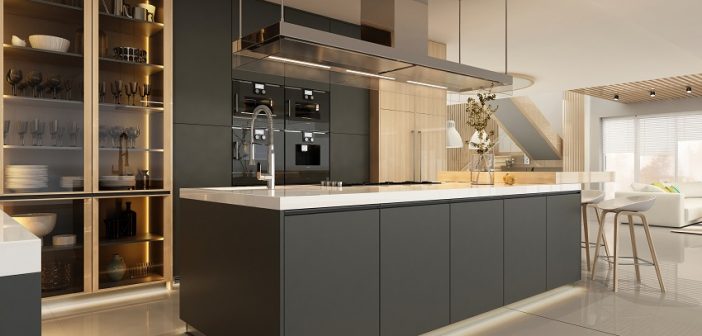Planning to remodel your kitchen? Are you tired of its current design or do you hope to fix it up to increase the value of your home?
Choosing aesthetic finishes and fixtures for your kitchen is one thing, but getting the layout wrong can cost money and time. One of the worst remodeling mistakes is not prioritizing functionality!
Of course, there are other common mistakes to keep an eye on and we’ve listed them down here for you.
Here are 7 remodeling mistakes you need to avoid.
1. Not Measuring Appliances
One of the most common remodeling mistakes is having the wrong sized appliances. It can affect how you open other appliances in the kitchen and also reduce circulation space.
Whether installing microwaves, blenders, dishwashers, or ovens, you need to mind their space. Keep a measuring tape, constantly near you to get the best fit for all your appliances.
When selecting appliances in advance, check their dimensions. Plan how they open and if your kitchen layout can accommodate them in your storage. This also applies to your utensils, pots, and pans.
2. Lacking Lights
With poor lighting, your kitchen will look dull and will only serve to hamper anything you do inside. Consider installing three main lights: task lighting, accent lighting, and overall illumination.
Task lighting allows you to do a task without straining your eyes by limiting shadows. It should be bright enough to allow you to see in a certain workspace. Examples of kitchen task lights are strip lights and puck lights.
Accent lighting creates a focal point in your kitchen. It draws attention to a specific area and builds dimension. Examples of accent lights are toe kick lights and cabinet lights.
The overall illumination or ambient lighting gives the total glow of the room. It creates the mood of the space and makes it easier for you to see and move comfortably. Examples of ambient lighting are chandeliers, flush mounts, and recessed lighting.
Remember, don’t focus on aesthetics more than functionality. Pendants are beautiful, but they don’t emit enough light to shine over your work surfaces. Instead, you should install downlights, overhead lights, sconces, and undercabinet lighting.
3. Forgetting About Workflow and Function
Don’t forget about the benefits of a good kitchen workflow. Without one, you may end up running back and forth for ingredients and any other kitchen tasks.
Consider how you use your kitchen to increase functionality. An example is placing your spices and oils near your cooking area or placing the ref near the sink.
Always think of your kitchen’s busiest areas. These are the sink, stove, and refrigerator.
Make sure these areas are in relevant areas and are close to one another. Many designers call this as the work triangle. It’s an effective layout that can improve functionality and show aesthetics.
The distance between each area should range between 4 and 9 feet. Remember that the triangle should never have things hiding it so no major traffic can happen in the work triangle area.
4. Missing Storage
Make use of your space by placing open storages or cabinets. You can place these on available floor space or install them on your walls.
If you prepare enough storage real estate, you can display all your cooking utensils. This prevents displacement and makes your kitchen look cleaner.
Good kitchen storage and design can increase the value of your home. They also function as security against insects and dust. Additionally, it keeps your food in better condition making the food last longer in storage.
Make sure to place all your storage within your reach. Decrease your effort to find what you need by adding pull-out storages. You should also use a separator to divide spaces in cabinets and add more items.
Not sure where to buy kitchen cabinets? Try here!
5. Poor Circulation Space
If you don’t have enough circulation space, your kitchen will feel cramped. It can also restrict the comfortability of people using the space at the same time.
Lack of space can make it hard to open appliances like your dishwasher or your fridge. This principle also extends to kitchen islands.
To have proper circulation space, have about 4 feet of space. For smaller kitchens, consider 2 to 3 feet. It can be between the kitchen countertops to the island.
Any space above 4 feet will make it harder to walk around and to reach other countertops. You can also offset the placements of key features such as the stove or sinks. Do this to ensure that multiple cooks won’t bump into each other.
6. Not Maximizing Vertical Space
In a small kitchen, every space counts. Wasting your vertical space can make your kitchen look dysfunctional and useless.
Vertical space is the room between your ceiling and floor. Including your wall, doors, and windows. Use your walls to your advantage and add some storage.
The best solution is to cover up your vertical space with cabinets and shelves. You can install wall appliances like an oven or refrigerator.
Place the cabinets right up to the ceiling. If you leave a space between the cabinets and ceiling, insects and dust can hide in there.
If you don’t like the idea of rows of closed-door cabinets, mix it up with some open shelves. For overhead cabinets or shelves, ensure that they are 2 to 3 feet away from your counter.
7. Ignoring the Budget and Planning
Spending more than your kitchen remodel budget is one of the biggest worries when making renovations. The best solution is for you to be realistic in planning the renovations.
Don’t commit to any major design elements like your flooring or materials. Always test materials and layouts before finalizing. Make the designs as minimalistic as possible to save more money.
You should have a cushion of 10% to 20% of your budget. A cushion refers to the extra money you have left after the renovation.
The average kitchen remodeling costs about $22,000. The price can change depending on your objectives and area.
This is why you need proper planning with a professional designer. They can provide a detailed plan for easier construction and a lesser price.
Remember that a plan will act as your foundation. Never change your plan in the middle of construction or you’ll end up making more mistakes and wasting more money.
Don’t Do These Remodeling Mistakes
Remember your kitchen remodel budget and have your kitchen remodel tools ready! The more you know about remodeling mistakes, the more likely you can avoid them. Do it right and add to the quality and vibe of your kitchen.
Of course, improving your home doesn’t end with a good kitchen remodel. To learn more tips and tricks to get your home in tip-top shape, we invite you to go over our content today. Get all the home decor and improvement guides you need!




